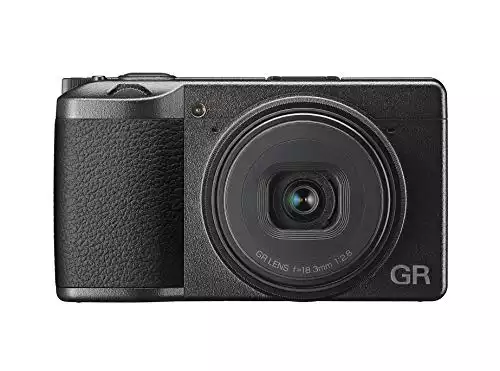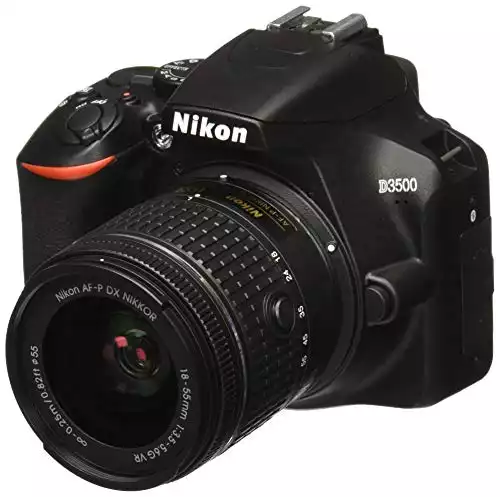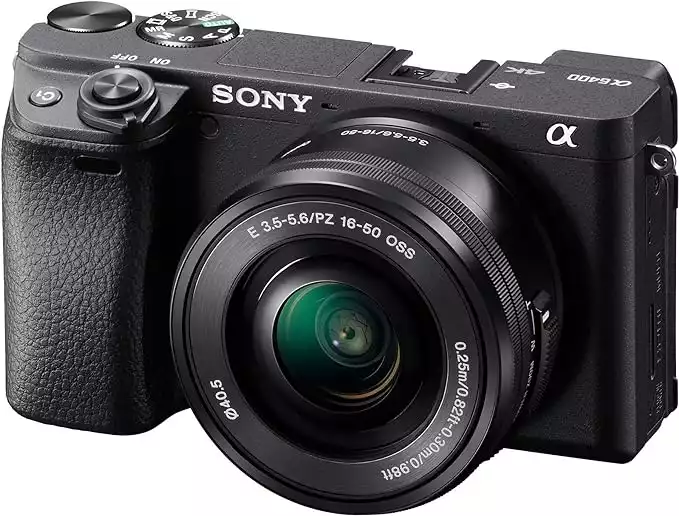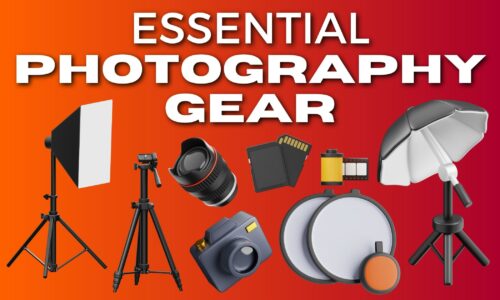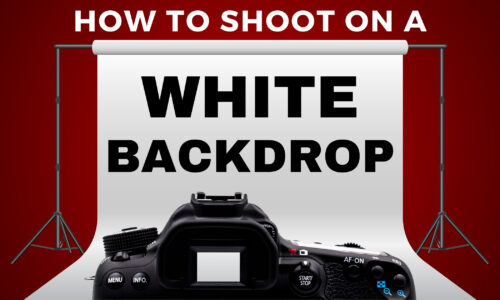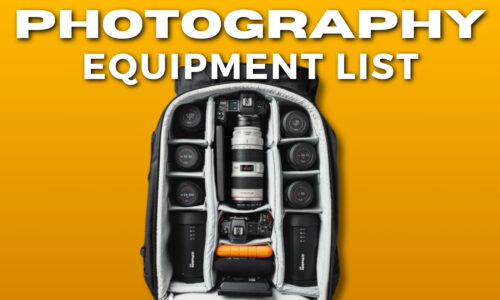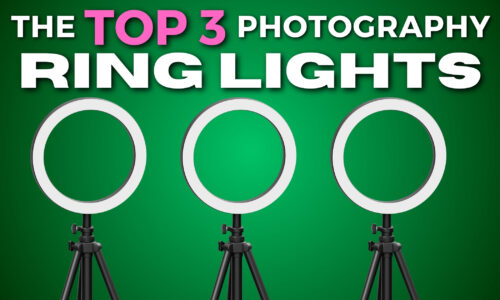What is a Camera? Learn The Magic Behind Taking Photos!
Have you ever wondered what happens inside the little black box we call a camera?
You point it at stuff, click a button, and POOF – you have a photograph!
Seems like magic, right?
Today, I will talk about how cameras work and capture the photos we love. Because understanding the science behind your camera will make you a better photographer.
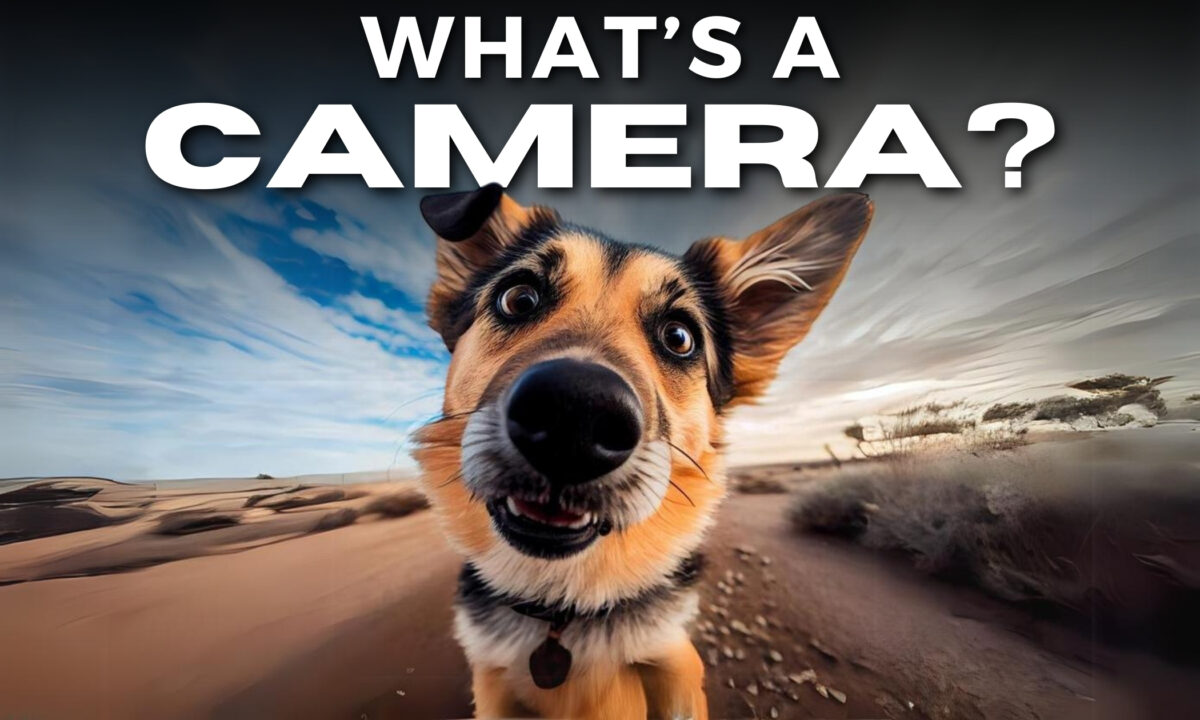
It gives you the power to use your camera to its full potential.
We’ll discuss lenses, sensors, aperture, shutter speed, and more. I’ll also explain each using simple terms so the concepts are easy to grasp. By the end of this article, you’ll understand exactly what happens from when you hit the shutter button to when you see your finished photo.
So, if you’re ready to learn the magic and science behind your camera, keep reading!
What is a Camera?
A camera is a device that captures and saves images or videos. These devices use an electronic image sensor or old-fashioned photographic film to create your images.
Now, let’s rewind a bit and talk about the ancestor of modern cameras, the camera obscure.
Picture this: it’s a simple box or room with a small opening that lets light pass through. Inside, the light projects an inverted image of whatever’s outside. Pretty amazing, right?
This led to the cameras we all know and use today.
The Main Components of a Digital Camera
Now, let’s talk about the main components of your camera.
The Camera Body
The camera body is your camera’s heart- the housing contains most of the essential parts.
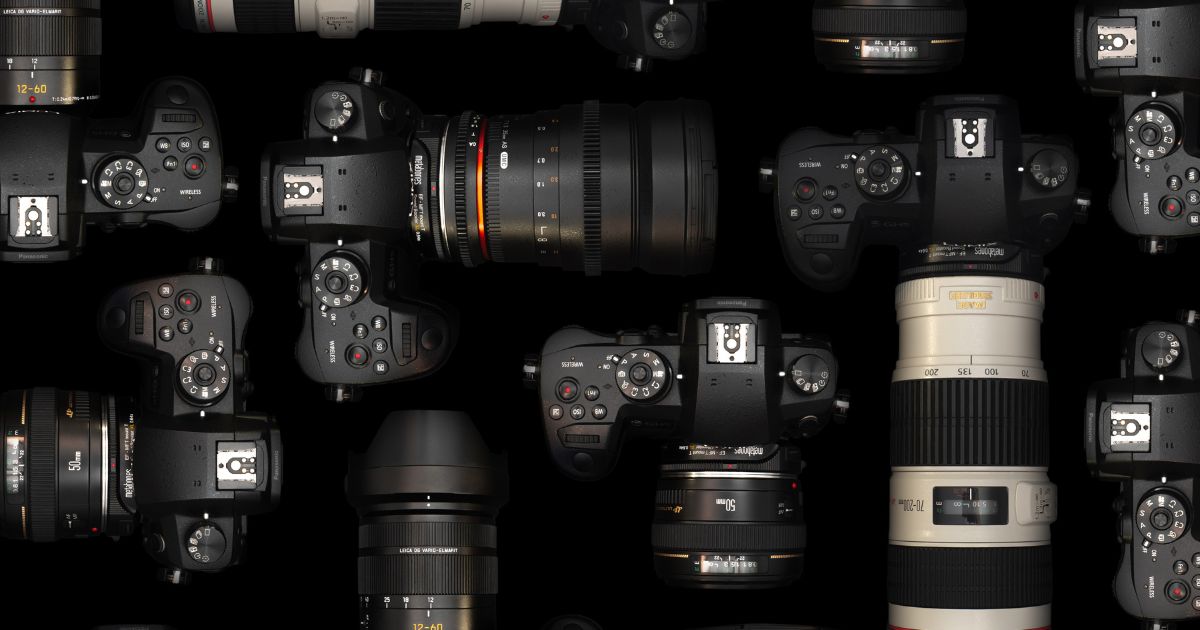
It’s usually made from durable materials like metal or plastic and comes in many shapes, sizes, and colors.
The body protects your camera’s components from the elements, making it easy to hold and take shots.
Camera Lens
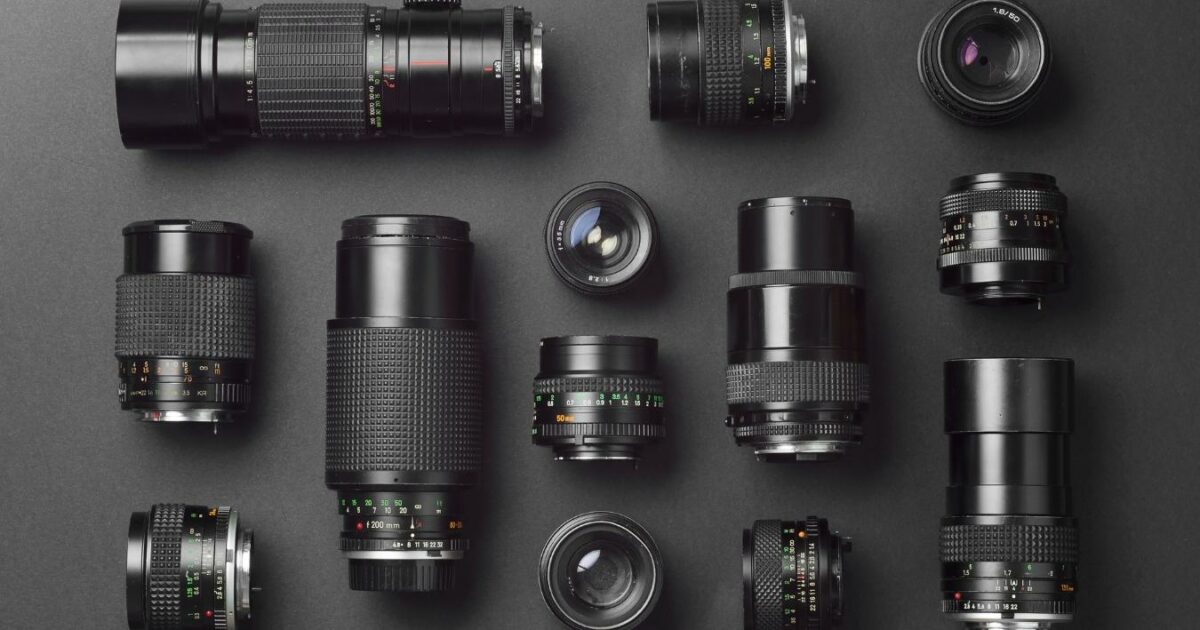
The lens is your camera’s eye.
Lenses are responsible for focusing light onto the camera sensor, ensuring your photos have the right amount of brightness, saturation, and depth of field.
And there are so many types of lenses, like normal, wide-angle, telephoto—and more! You can swap lenses to match your needs and test different focal lengths.
Shutter
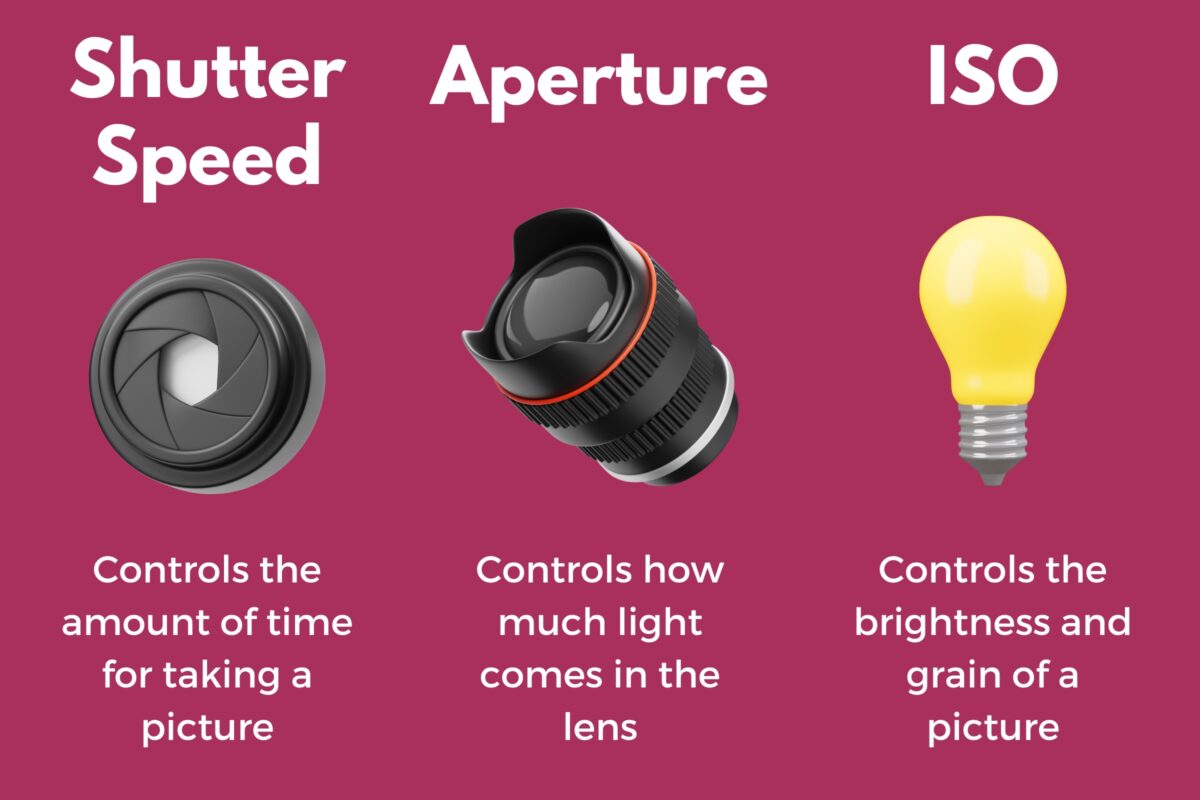
The camera shutter is the gatekeeper of your camera!
The shutter quickly opens and closes, allowing light to pass through to the sensor. It also defines how long the sensor will be exposed – controls your photo’s exposure time.
Faster shutter speeds give you crisp action shots, while slower speeds allow for dreamy, motion-blurred images.
Sensor
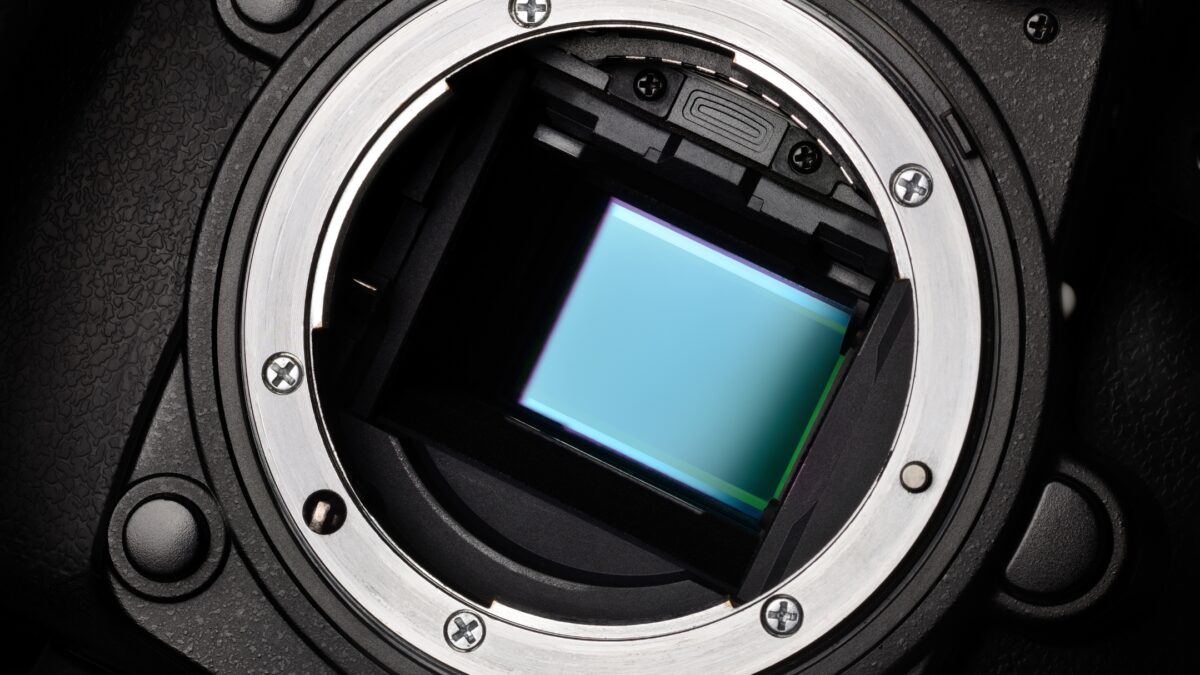
The sensor is like the digital film of your camera.
Its job is to capture the light entering through the lens and shutter. Which it then converts into an image with the help of millions of tiny light-sensitive pixels.
Bigger sensors collect more light, so expect better image quality and low-light performance.
Also, your camera’s sensor affects elements like brightness, focus, and depth of field.
Aperture
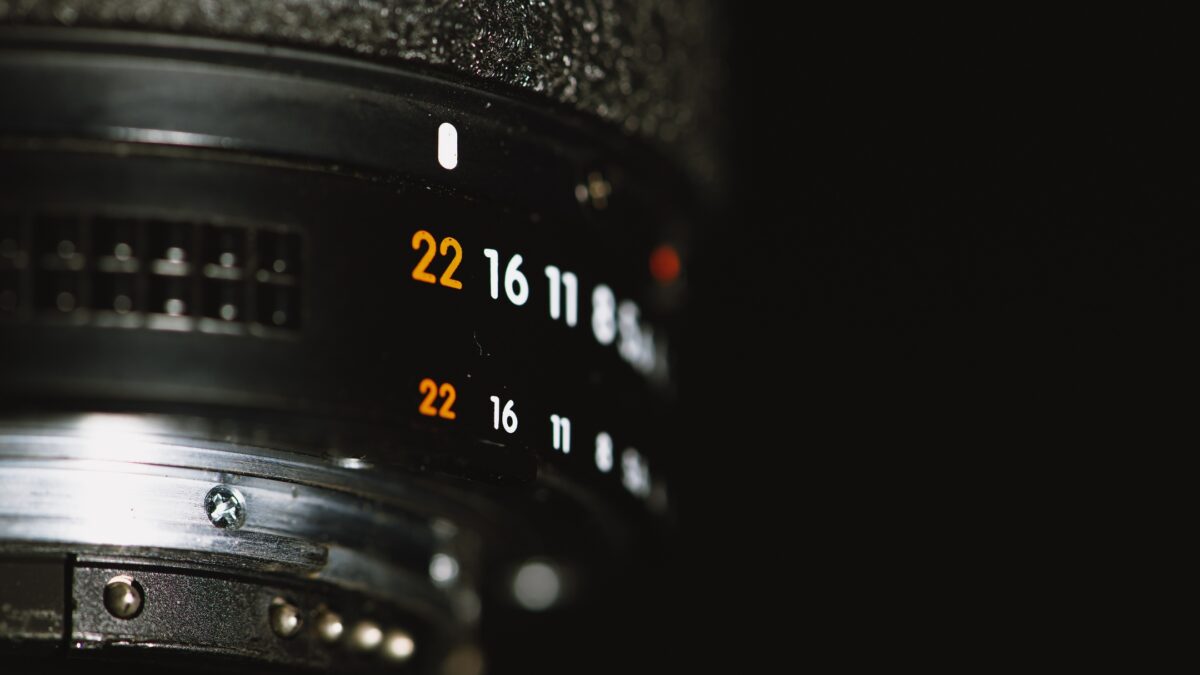
The aperture plays a big role in controlling how much light hits your camera’s sensor. It’s an adjustable opening inside the lens that can be widened or narrowed depending on your desired amount of light and depth of field.
A smaller aperture (higher f-number) means a deeper depth of field, while a larger aperture (lower f-number) means a shallower depth of field.
Viewfinder
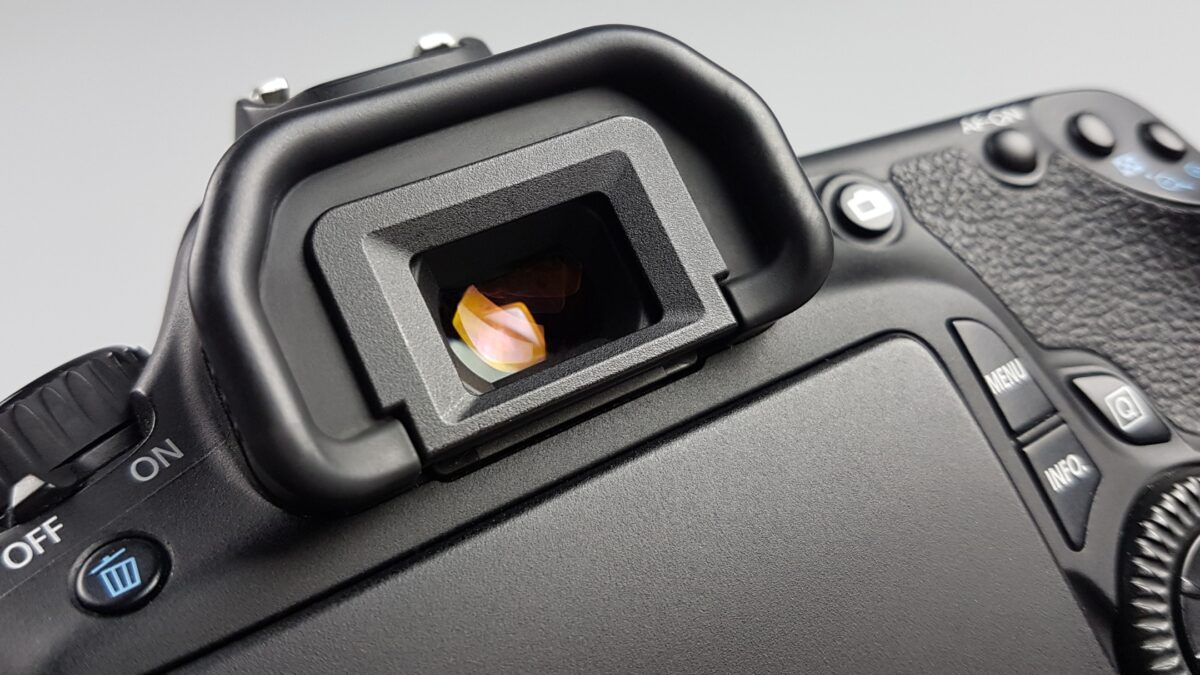
That little window you peek through to frame your shots?
That’s your viewfinder! It helps you compose and focus your scene before snapping away. There are two main types of viewfinders: optical (found in DSLRs) and electronic (typically in mirrorless cameras).
Optical viewfinders show you the scene through the lens, while electronic ones display a digital image of the scene on a tiny screen.
Image Processors
Finally, the brains of your camera: image processors!
They process all the data captured by the sensor and render it into gorgeous images. Image processors aren’t just about making your photos look good—they also impact camera performance, speed, and battery life.
A Quick Explanation of How Cameras Capture Images
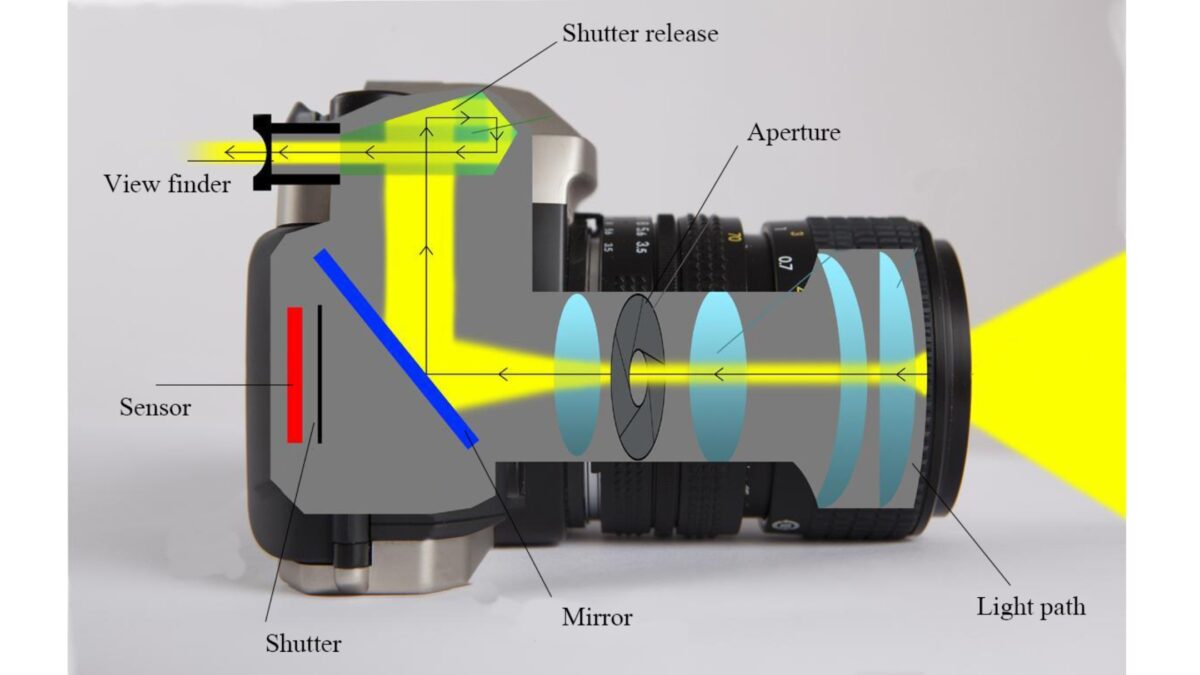
First, your camera partners with light. So, picture this!
When you take a photo, your camera is hungry to collect the light rays bouncing around and transform them into images. How does it do that?
It all starts with the lens. The lens is like the director of your camera. It’s responsible for collecting and directing light rays towards a light-sensitive surface. These rays then hit a digital sensor (in digital cameras) or photographic film (in analog cameras).
And here’s where the good stuff happens.
The light-sensitive surface records the light’s intensity and color to create an image. In digital cameras, the sensor converts the light into electrical signals. This becomes the picture you see on your screen or printout.
In film cameras, chemical reactions occur on the light-sensitive film, turning the light into a physical photograph once you develop it.
Quick fact: When we adjust the focus in our cameras, we ensure the light rays meet perfectly at the right point on the light-sensitive surface. Yup, it’s that simple! Your images might appear blurry or out-of-focus if the light doesn’t meet at the perfect spot.
And that’s it!
A brief explanation of how cameras capture images. I hope my explanation makes the process not so mysterious now.
Different Camera Types and Features
Point-and-Shoot Cameras
If you like simplicity, you’ll love point-and-shoot cameras.
Point-and-shoot cameras are perfect for those “grab and go” moments because they’re:
- Affordable
- Super easy to use
- Compact and lightweight
A great compact digital camera featuring a 24-megapixel sensor and user-friendly touchscreen LCD for easy navigation and control.
But don’t underestimate their capabilities. You can still capture impressive shots in many scenes with optical zoom and image stabilization. And they’re perfect for beginners or casual photography!
DSLR Cameras
DSLR (Digital Single Lens Reflex) Cameras are high-performance devices that offer:
- Interchangeable lenses
- Manual controls for creativity
- Excellent image quality
With a DSLR, you’re in control, and the possibilities are endless.
With its comfortable design and intuitive controls, it is an ideal choice for beginners looking to explore the world of photography.
Mirrorless Cameras
Want the power of a DSLR without the bulk? Get yourself a Mirrorless Camera! These cameras are compact, lightweight, and provide amazing image quality. Key features include:
- Interchangeable lenses
- Electronic viewfinder
- Faster autofocus
And you’ll enjoy the stunning quality and agility these advanced camera options provide.
This camera has a simple interface with helpful tutorials and a touchscreen LCD.
It takes incredible pictures and is great if you're also looking to use it for video content.
Smartphones
If you have a smartphone, there is always a camera in your pocket!
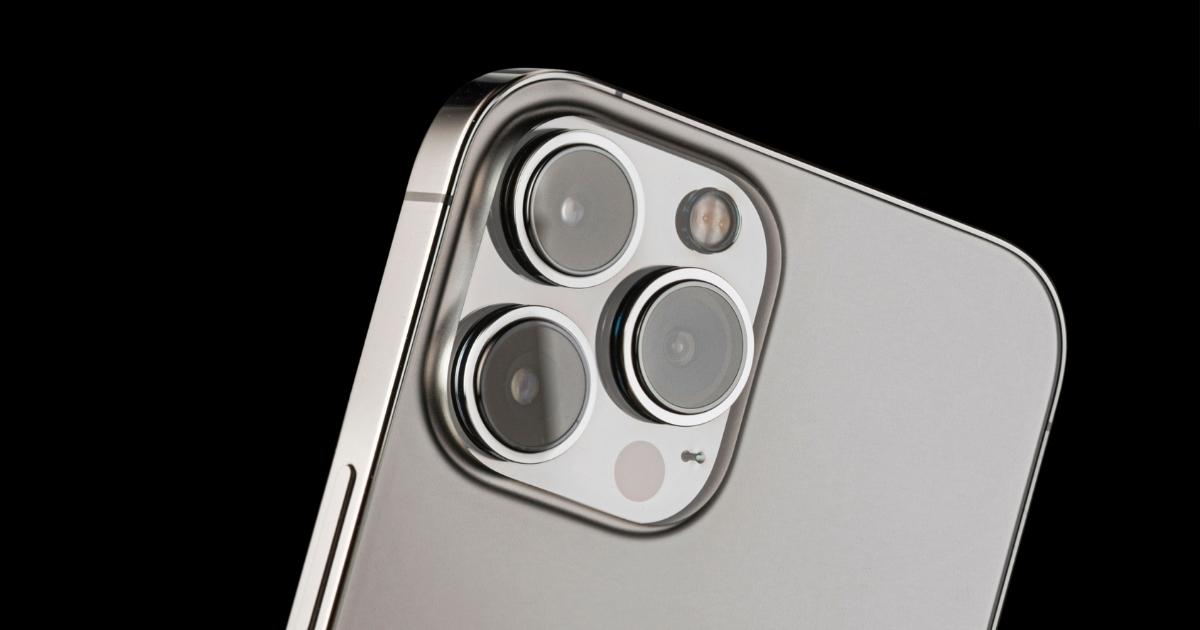
Smartphone cameras have come a long way, and these days, they pack a lot of power and have:
- High-resolution sensors
- Advanced camera apps for creativity
- Features so you can easily share your pictures
So, there is no need for separate gadgets if you don’t need a perfect photo; your trusty smartphone can do the job.
Medium Format Cameras
Medium Format Cameras are the real deal. For serious professionals and photography purists, these cameras provide:
- Exceptionally high image resolution
- Outstanding dynamic range
- Incredible detail and color reproduction
Action Cameras and Specialized Cameras
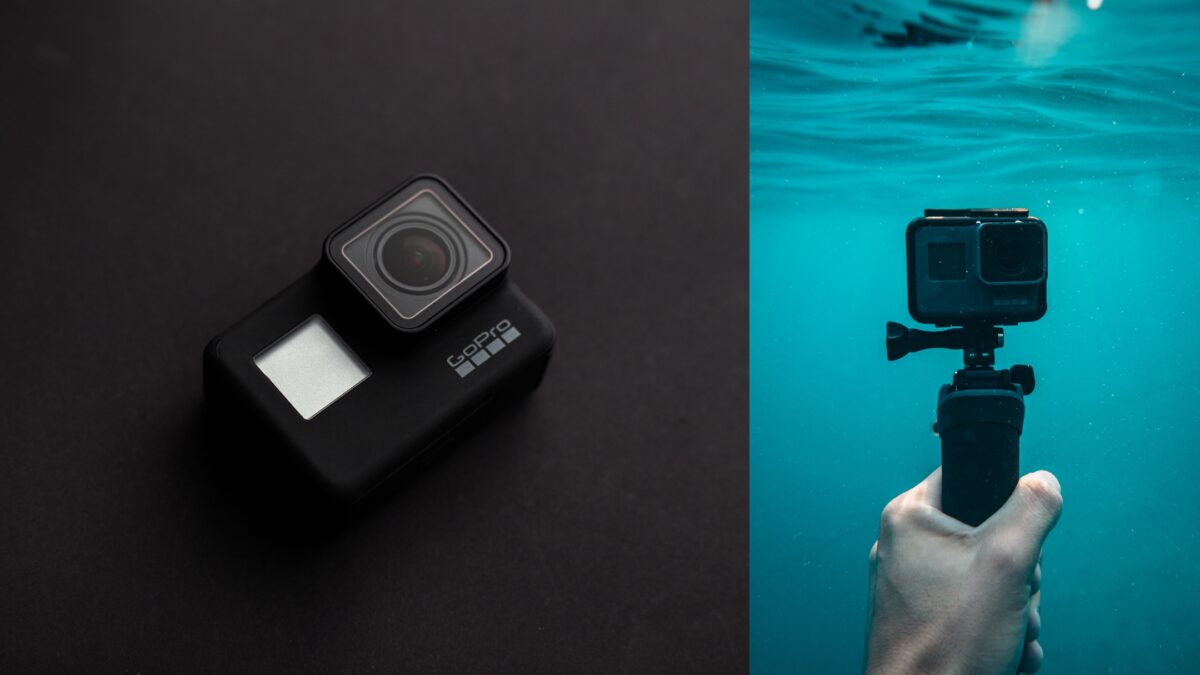
Are you a thrill-seeker, or do you love getting creative with different perspectives? Check out Action Cameras and other special devices. They offer:
- Rugged, waterproof builds for extreme conditions
- Creative shooting modes like 360-degree views
- Compact designs that don’t compromise on quality
They’re great for filming your epic adventures or capturing slow motion.
Medium Format vs. DSLR and Mirrorless Cameras
I made a table to show the difference between popular and medium-format cameras.
Note: Individual camera models might have features or performances that differ from what I’ve listed below. So, check specific model specs and reviews if you are considering a purchase.
| Feature | Medium Format | DSLR | Mirrorless |
|---|---|---|---|
| Sensor Size | Larger than full-frame | Full-frame or smaller | Full-frame or smaller |
| Image Quality | Higher resolution, increased dynamic range | Very good, dependent on sensor size and quality | Very good, increasingly comparable to DSLRs |
| Size & Weight | Generally larger and heavier | Can be bulky, especially full-frame models | Typically more compact and lightweight |
| Price | Generally more expensive | Varies widely, from affordable to expensive | Varies, but often less expensive than medium format |
| Lens Availability | Limited due to niche market | Wide variety available for established brands | Growing selection, especially for popular brands |
| Use Cases | Professional photography, studio, landscape, fine art | General, portrait, landscape, wildlife, sports | General, travel, street, increasingly professional |
| Viewfinder | Optical or Electronic | Optical (through mirror system) | Electronic (some models also offer optical) |
| Battery Life | Varies, often shorter due to electronic components | Typically longer due to optical viewfinder | Varies, but often shorter due to reliance on electronic viewfinder or screen |
| Autofocus Speed | Can be slower due to larger sensor readout | Fast, especially on higher-end models | Fast and improving, especially with recent models |
The Digital Camera Advantage
I will now share a few benefits of shooting with a digital camera.
Instant Feedback and Image Review
With a digital camera, you get instant feedback! Gone are the days of waiting for your film to be developed.
When you snap a photo, it appears on the camera’s built-in LCD screen. This lets you review your images on the spot and capture a picture you like.
Digital Processing and Software Enhancements
Another great perk of digital cameras is your images can easily be edited to perfection with digital processing and software.
When you don’t get the exposure or focus right, you can still make adjustments with editing software. Also, digital cameras come with built-in features like:
- Automatic modes: Helps you capture great photos with minimal effort.
- Filters and effects: Get creative and add different artistic styles to your images.
- Panorama: Easily stitch together multiple photos to create a nice wide-angle shot.
Storage, Sharing, and Connectivity
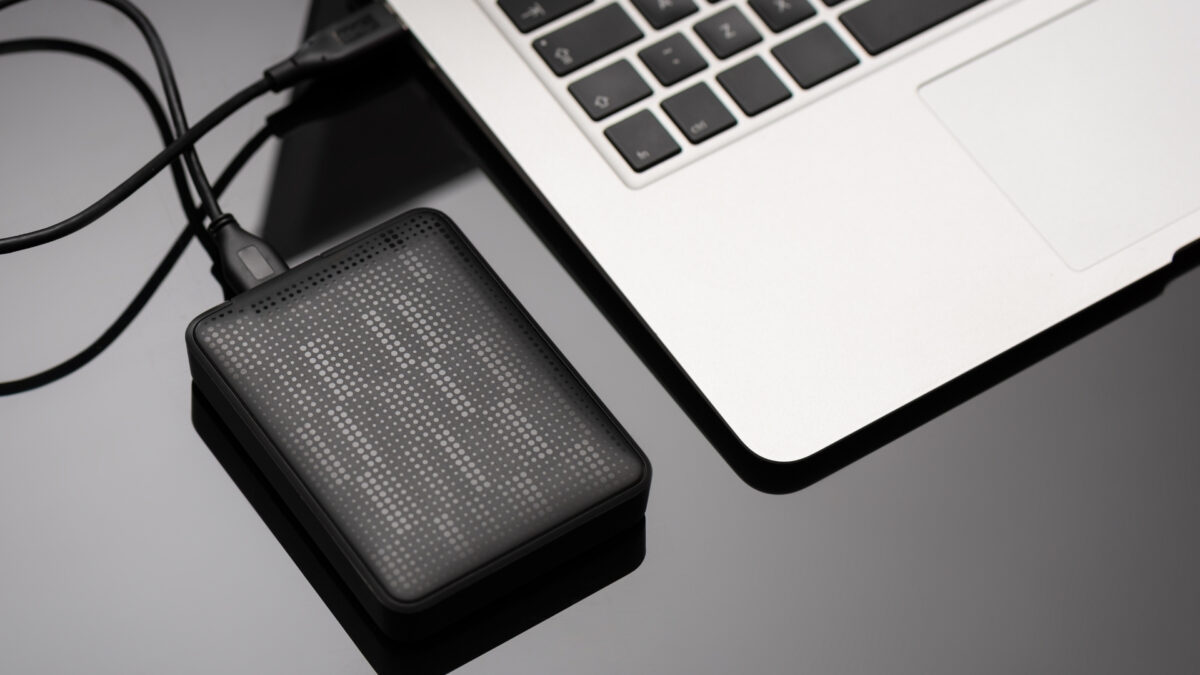
One of the best advantages of using a digital camera is how effortlessly you can store, share, and connect your photos. Gone are the days of bulky photo albums and limited storage space.
With digital images, you can:
- Store thousands of high-quality photos and videos on small, affordable devices or in the cloud.
- Easily transfer your images to your computer or smartphone for editing and backup.
- Share your photos with friends and family through email, social media, and online galleries.
Digital cameras also double as webcams, letting you stream live video.
5 Reasons Why You Should Understand Your Camera as a Photographer
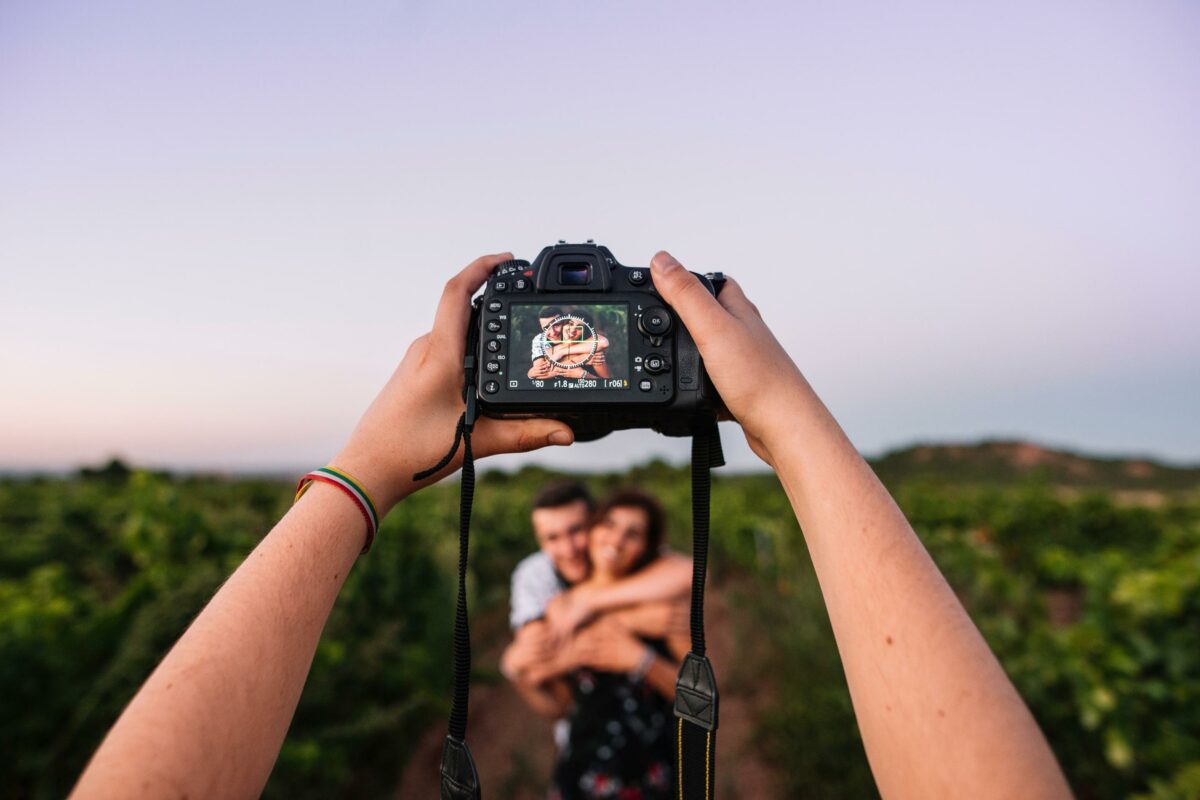
If you’re a photographer, you should learn and understand how to use your camera properly because:
- Understanding your camera controls allows you to take the exact photo you intend. Things like aperture, shutter speed, ISO, and exposure compensation directly impact the look of your photos. Knowing how to adjust these settings gives you creative control.
- You can troubleshoot technical issues if you understand how your camera works. Suppose your photos are too dark, blurry, or with unintended effects. In that case, you can diagnose and fix the problem if you know the fundamentals of exposure and camera mechanics.
- Different cameras and lenses equal different styles of photography. A macro lens excels at close-up detail shots, while a wide-angle lens is best for landscape images. Knowing the capabilities of your camera lets you choose gear purposefully.
- Mastering the technical aspects of your camera frees you up to focus on the creative side of photography. You won’t have to fight with your equipment if you can control it. Instead, you can concentrate on composition, lighting, and capturing pictures.
- Understanding your equipment prepares you to upgrade intelligently later on. Plus, as you improve as a photographer, you’ll know what features and specs to look for when you’re ready to invest in new gear.
But I know modern cameras have loads of settings and options.
So, if you’re feeling lost with all the options and settings, take a training course or workshops available for your camera or skill level.
Major Camera Manufacturers
Canon has been in the game since 1937, and they’ve been making great cameras ever since. From film to digital cameras, they’ve got it. Canon also holds almost 50% of the market share, making it the titan of the camera industry. If you buy a new camera, Canon is hard to miss.
Now, let’s talk Nikon. They’ve been around for a while, too, and they’re well known for producing quality cameras with a focus on outstanding performance. Nikon is a reliable camera brand with about 13% of the market share. Their advanced DSLRs and mirrorless cameras are perfect for both professionals and enthusiasts.
Next up is Sony! Even though they didn’t start in the camera industry, they quickly became a favorite manufacturer that can’t be ignored. Sony holds about 22% market share. And they’re known for their cutting-edge technology and innovation. Their mirrorless cameras have been making waves in recent years, and they continue to break new ground with their impressive lineup.
Also, there are other notable brands in the camera world, like Fujifilm and Panasonic. And they capture roughly 5% and 4% market share.
The rest of the market share comprises specialty and niche manufacturers offering unique cameras and features.
Modern Camera Advancements
AI in Cameras
AI powering and being added to our cameras like never before!
With each update, cameras are becoming more and more advanced. And when you take a photo, AI algorithms constantly work behind the scenes to analyze and optimize your images.
They can detect faces, track subjects, and even optimize settings based on your shooting scene. Cool right?
But wait, there’s more!
AI in cameras has gone beyond helping you snap the perfect photo. It also helps post-processing by providing features such as automatic noise reduction, advanced color grading, and even intelligent cropping.
Multiple Camera Features
Modern cameras come with not one, not two, but multiple camera features!
It’s like having a whole professional photography setup right in your pocket. Let’s quickly run through some of the most common ones you’ll find:
- Autofocus – Makes getting sharp shots a breeze by automatically adjusting the lens to keep your subject in focus. No more missed shots from manually focusing!
- Face detection – Many cameras can recognize faces and optimize focus and exposure specifically for them. Great for nailing family photos.
- Image stabilization – Sensors or lens elements shift to counteract camera shake, letting you shoot sharp handheld shots at slower shutter speeds or longer zooms.
- High ISO capabilities – Newer cameras can shoot clean images at high ISO levels, letting you capture images in low light without flash or blur.
- Wireless connectivity – Built-in WiFi allows you to transfer images to your smartphone on the go. Some cameras even have Bluetooth for connecting external devices.
- Touch screens – Interact with your camera settings by tapping an LCD. It makes menu navigation and mode selections super easy.
- 4K video – Record high-res footage or extract great stills from your videos. Slow motion modes are also common now.
- GPS – Automatically geotag your images with the location they were taken. Great for travelers and documenting trips.
There are even more niche features like timelapse, multiple exposures, panoramas, etc. And new cameras now automatically switch between them, depending on your needs.
The Future of Cameras and Camera Technology
New camera technology is expected to revolutionize how you capture memories and interact with your devices.
So, what’s in store for the world of cameras?
Computational photography will be a game changer. Using advanced software and algorithms, cameras can fuse multiple exposures and frames to produce images that no single shot could capture.
This means we’ll see massive improvements in low-light performance, resolution, dynamic range, and focusing capabilities. Machine learning will also enable smart scene optimizations and editing suggestions.
And mirrorless cameras are the future. When you remove the optical viewfinder and mirror system, mirrorless cameras can be significantly smaller and lighter than DSLRs while delivering equal or better image quality.
I expect mirrorless cameras to push DSLRs into niche usage within 5-10 years.
Connectivity and sharing capabilities will also continue improving. WiFi and Bluetooth make transferring photos to smartphones and networks easy. But 5G internet and better app integration will transform cameras into always-connected devices. Social media sharing directly from the camera might even become the norm.
Video performance will also keep getting better with new sensors and improved stabilization. And 8K video will likely go fully mainstream in a few years. Plus, more cameras mean more images!
Wearable cameras, dual camera phones, and more will bring new creative possibilities as camera technology advances rapidly in hardware and software.
So, there are incredibly exciting times ahead for photographers!
Frequently Asked Questions About Cameras
How does a camera work?
Cameras capture images by focusing light onto a sensor (in digital cameras) or film (in traditional cameras). When you press the shutter button, the camera’s shutter opens, allowing light to enter through the lens. This light then hits the sensor or film, creating an image. The amount of light and the duration it’s exposed to the sensor or film are controlled by the aperture (lens opening size) and shutter speed. The sensor converts this light into electronic data in digital cameras to produce a digital image.
What are the main components of a camera?
Main components include:
- Lens: Your camera’s eye gathers light and focuses it onto the sensor.
- Shutter: The curtains that control the exposure of the sensor to light.
- Sensor (or film): Where the image is captured and formed, converting light into digital data or a physical photograph.
- Viewfinder: This lets you compose your shot and see what the camera sees!
Why are cameras important in our lives?
Cameras are huge because they let us express ourselves creatively and play a huge role in communication by letting us share our experiences and stories with others.
What are some creative ways to use a camera?
Some creative ways to use a camera include:
- Long exposures: Capture movement in your scene, like light trails or waterfalls.
- Bokeh: Create a dreamy background blur by focusing on a close-up subject and using a wide aperture.
- Double exposures: Combine two or more exposures into one image for a surreal effect.
- Abstract photography: Break the rules and play with shapes, colors, and perspectives to shoot creative images.
